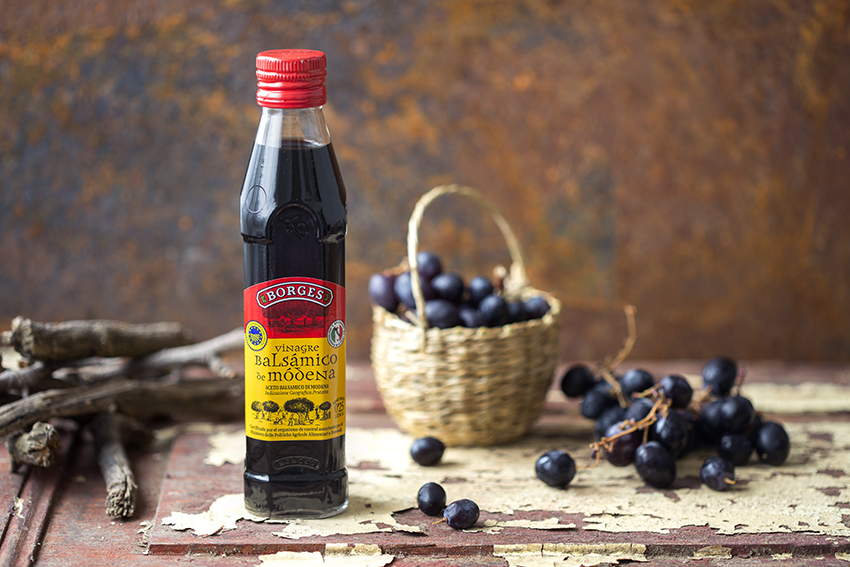It’s a magic ingredient that can liven up any salad and add a dash of colour to any dull dish: a staple in your kitchen cupboard ready to help you out by giving a fresh twist to your meals. But how much do you actually know about Modena balsamic vinegar? How is it made? Where does it come from? Become an expert in this sensational ingredient that has revolutionised mealtimes and is here to stay.
1. It has Protected Geographical Indication (IGP) status exclusive to the areas of the modern-day provinces of Modena and Reggio Emilia.
2. It is made using a similar system to how Spanish sherry is made, which means a decent Modena balsamic vinegar requires a certain degree of ageing. In contrast to other vinegars made directly from wine, Modena balsamic vinegar is made from cooked must from local grapes (Trebbiano, Uniblanc, Malbec or Barbera). It is aged in different sized oak, cherry or chestnut barrels, among others.
3. There is a difference between, on the one hand, Traditional Balsamic Vinegar of Modena (DOP) and Traditional Balsamic Vinegar of Reggio Emilia (DOP), made after 12 months’ ageing and which can cost up to €100 a bottle, and, on the other, the commoner (and cheaper) Balsamic Vinegar of Modena (IGP), which is refined for at least 60 days.
4. The Romans appear to have loved this wonderful ingredient with its unmistakable flavour, which grew in popularly during the Renaissance and reached a peak in the 17th century, when Modena became the capital of the East Duchy. The dukes made it their own and even had their own cellar inside their palace.
5. It is made with a continuous mixture of old and new vinegars to create a lively result with its own personality with unique, unmistakable organoleptic properties.
6. It is called balsamic vinegar because its medicinal properties were used to combat rheumatism. Apparently, people would rub the affected part of the body with Modena balsamic vinegar and would be miraculously cured!
7. There have always been swindlers out there trying to sell fake Modena balsamic vinegars. First and foremost, you should check the label for the Protected Geographical Indication (IGP) status to ensure it really comes from Modena and has been made from local grapes.
8. More underhand tricks: some Modena balsamic vinegars aren’t made from must but directly from wine, which is simpler and cheaper but doesn’t give the same flavour and texture.
9. You can recognise a good Modena balsamic vinegar by its flavour and texture: it should be thick and velvety with a long, sweet finish.
10. It can be used in far more than just vinaigrettes: ice cream, desserts (a good panna cotta with a dash of Modena balsamic vinegar is divine), meat, fish and vegetables are just some of its great allies.


